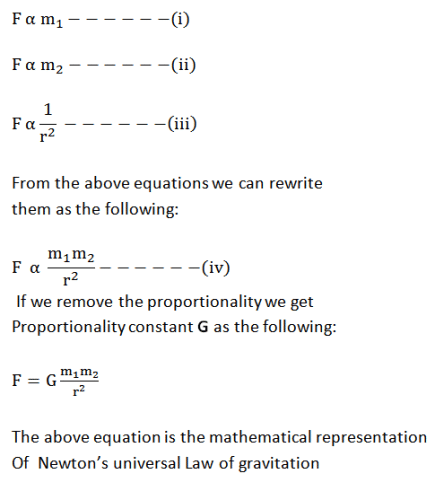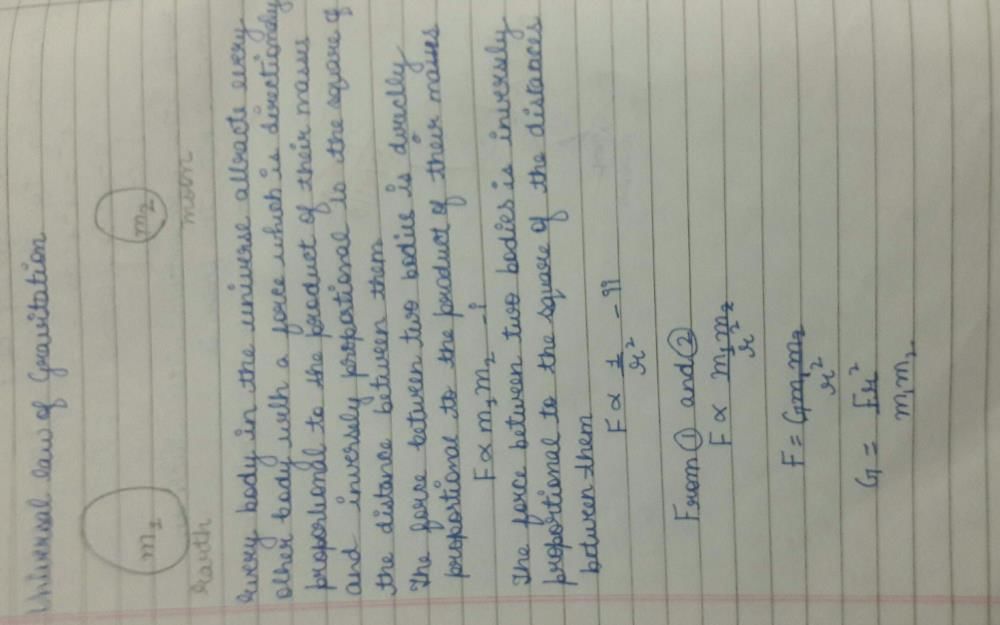Class 9 Exam > Class 9 Questions > What is the mathematical form of universal la...
Start Learning for Free
What is the mathematical form of universal law of gravitation?
Most Upvoted Answer
What is the mathematical form of universal law of gravitation?
State the universal law of gravitation.
Universal law of gravitation: The universal law of gravitation states that every object in the universe attracts every other object with a force called the gravitational force. The force acting between two objects is directly proportional to the product of their masses and inversely proportional to the square of the distance between their centres.
Derivation: For two objects of masses m1 and m2 and the distance between them r, the force (F) of attraction acting between them is given by the universal law of gravitation as:

Community Answer
What is the mathematical form of universal law of gravitation?


|
Explore Courses for Class 9 exam
|

|
Similar Class 9 Doubts
What is the mathematical form of universal law of gravitation?
Question Description
What is the mathematical form of universal law of gravitation? for Class 9 2025 is part of Class 9 preparation. The Question and answers have been prepared according to the Class 9 exam syllabus. Information about What is the mathematical form of universal law of gravitation? covers all topics & solutions for Class 9 2025 Exam. Find important definitions, questions, meanings, examples, exercises and tests below for What is the mathematical form of universal law of gravitation?.
What is the mathematical form of universal law of gravitation? for Class 9 2025 is part of Class 9 preparation. The Question and answers have been prepared according to the Class 9 exam syllabus. Information about What is the mathematical form of universal law of gravitation? covers all topics & solutions for Class 9 2025 Exam. Find important definitions, questions, meanings, examples, exercises and tests below for What is the mathematical form of universal law of gravitation?.
Solutions for What is the mathematical form of universal law of gravitation? in English & in Hindi are available as part of our courses for Class 9.
Download more important topics, notes, lectures and mock test series for Class 9 Exam by signing up for free.
Here you can find the meaning of What is the mathematical form of universal law of gravitation? defined & explained in the simplest way possible. Besides giving the explanation of
What is the mathematical form of universal law of gravitation?, a detailed solution for What is the mathematical form of universal law of gravitation? has been provided alongside types of What is the mathematical form of universal law of gravitation? theory, EduRev gives you an
ample number of questions to practice What is the mathematical form of universal law of gravitation? tests, examples and also practice Class 9 tests.

|
Explore Courses for Class 9 exam
|

|
Signup for Free!
Signup to see your scores go up within 7 days! Learn & Practice with 1000+ FREE Notes, Videos & Tests.


























